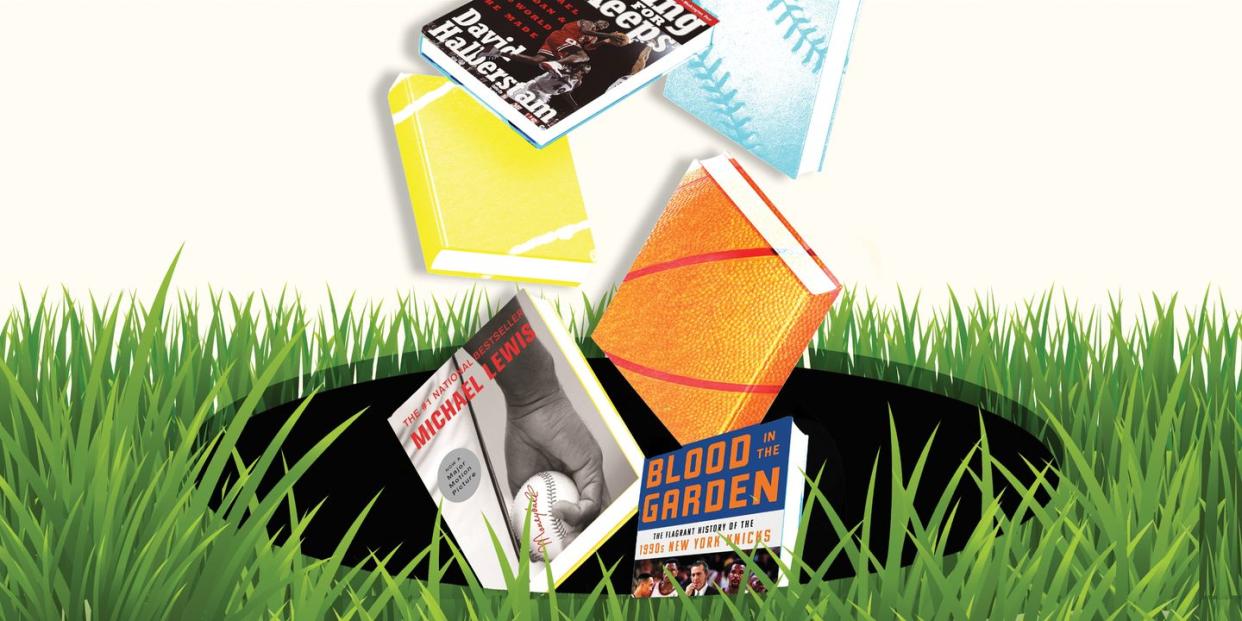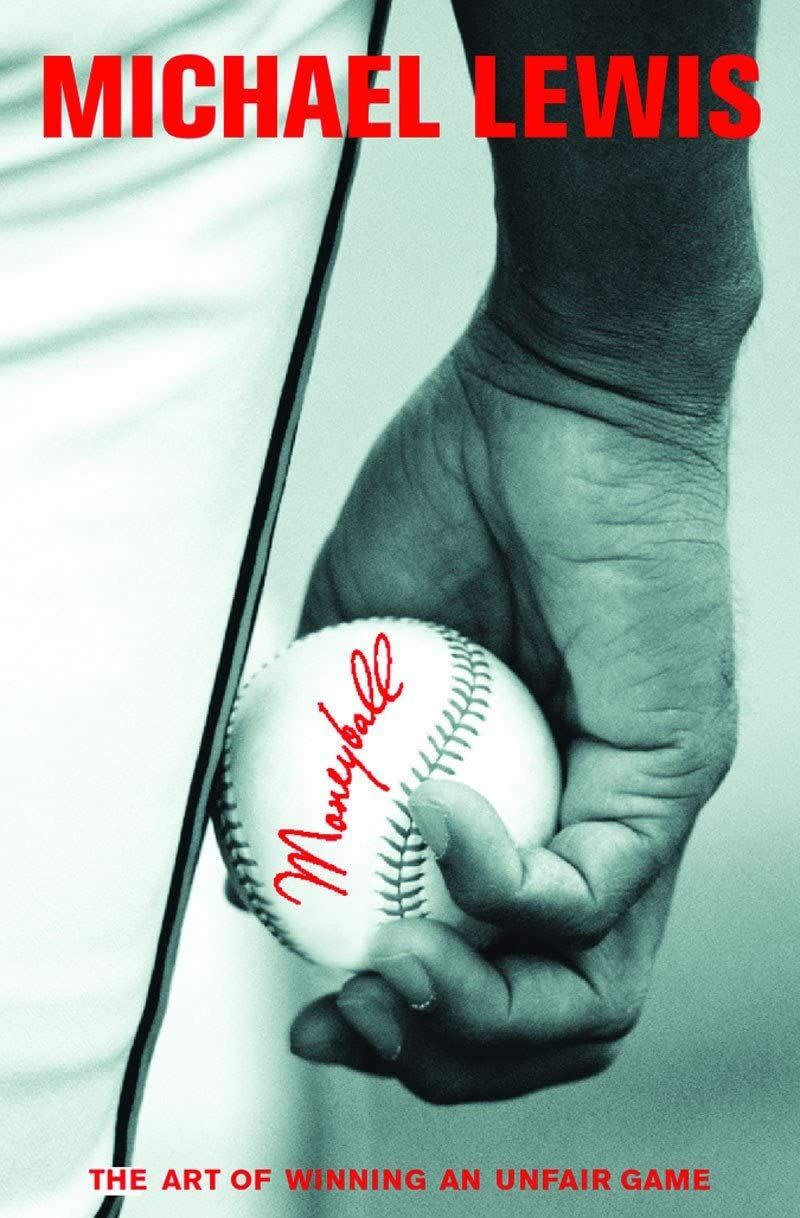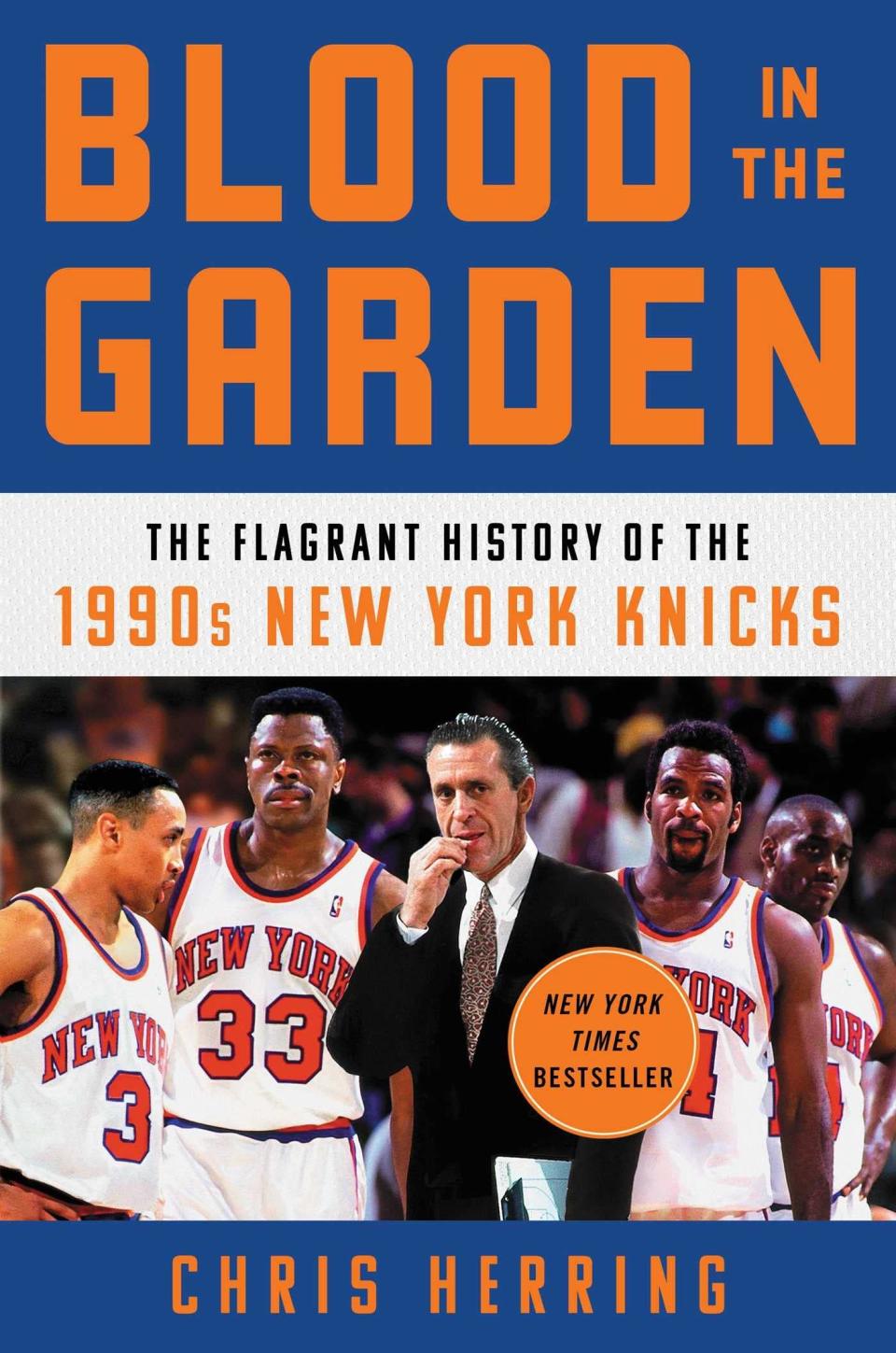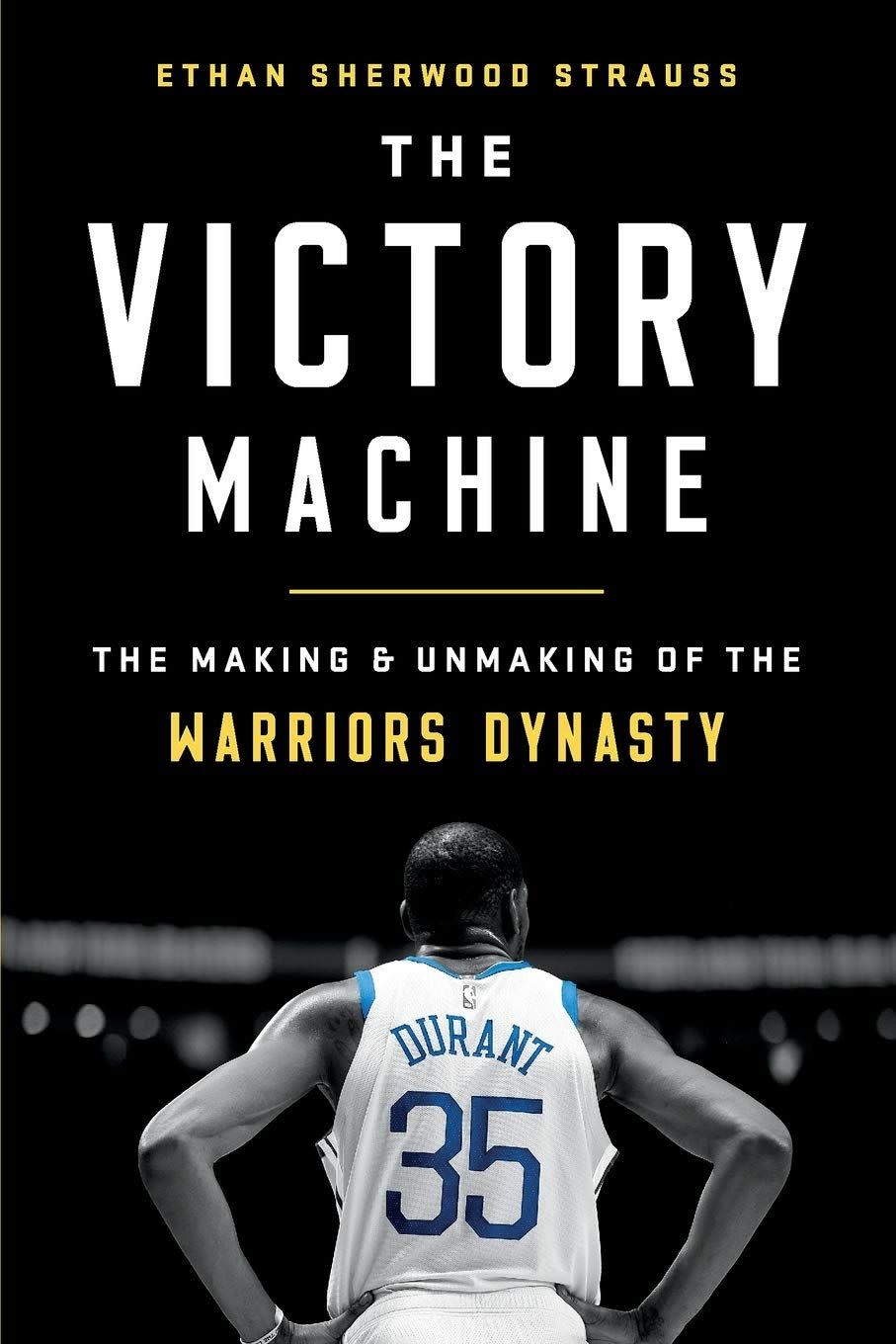What Happened to All the Sports Books?

- Oops!Something went wrong.Please try again later.
"Hearst Magazines and Yahoo may earn commission or revenue on some items through these links."
Late one night in 2002, writer Michael Lewis knew he had a winner. Lewis was spending his summer shadowing the Oakland A’s, reporting the story that would later be known as Moneyball. But an even better idea for a sequel popped into his head, and he couldn’t stop thinking about it. He even had a title picked out: Underdogs.
In Moneyball, Lewis uncovered a radical, data-driven approach the A’s used to build a winning team despite having one of the lowest payrolls in baseball. But that story just scratched the surface. For Underdogs, Lewis imagined following the prospects the A’s drafted that year. He’d track them for a few seasons and examine how the players responded to being guinea pigs in this unusual experiment. That night, Lewis fired off an email to his editor, and soon after, he sold it as a two-book deal.
The next year, Moneyball became an immediate hit. It spent 20 weeks on The New York Times Hardcover Nonfiction best seller list and sparked a fiery discourse about how baseball teams should operate. The conversation also transcended America’s pastime because the book’s big themes of spotting inefficiencies and maximizing value could apply to just about any industry. Pro football, basketball, and hockey teams quickly contacted the A’s to learn more, as did movie studios, Wall Street firms, and Fortune 500 companies. All of this exposure was terrific for selling books, but there was an important trade-off.
“Within six months of Moneyball coming out, I had this sinking sense,” Lewis told me. “It felt like a whole landscape was being deforested. I wasn’t going to have anything original to say.” Moneyball has since sold millions of copies and been adapted into an Oscar-nominated movie. But its success swallowed up the possibility of Underdogs, so Lewis abandoned the sequel and moved on.
Then, in 2006, came The Blind Side, Lewis’s best seller about the evolution of football (it, too, became a movie that went to the Oscars). At the time, The New York Times credited Lewis with “advancing a new genre of journalism that shows how market forces and economic reasoning shape the evolution of sports.” In three years, he released arguably the two biggest sports books of the 21st century. He hasn’t written another one since.
Why not? The simple answer is that Lewis hasn’t discovered a sports story worthy of another book. The more complicated answer is that sports media has changed drastically in the last two decades, draining such books of their significance.

$16.69
amazon.com
One can trace signs of the changes back to when Underdogs started to lose its appeal. A few months after Moneyball landed in bookstores, ESPN launched a new morning show called Cold Pizza, which eventually adopted a debate-style format featuring loud talking heads like Skip Bayless and Stephen A. Smith. (Cold Pizza morphed into ESPN’s current flagship program First Take.) The show’s residue can be found on most of today’s sports commentary, which prioritizes nonstop hot takes over thoughtful insights.
At the same time, sports coverage sped up on digital channels, while print writing faded. The Sporting News, which launched in 1886, published its final print issue in 2012, while ESPN discontinued its magazine in 2019. Sports Illustrated now ships print issues monthly instead of weekly. This evolution means fewer opportunities for ambitious longform stories that could develop into books.
“I do wonder if the sheer volume, the nature of sports media right now, is a bit too messy for writers who are pregnant with an idea that might take longer to get out there,” Lewis said.
To put it in perspective, the first week Moneyball became a bestseller, four other sports books joined it on the Hardcover Nonfiction list—including works from accomplished authors like David Halberstam, John Feinstein, and Rick Reilly. That year, 121 new nonfiction books became bestsellers, and 11% were about sports. In 2022, 166 new nonfiction books became best sellers, but only 4% dealt with sports. Overall, adult nonfiction sales dropped 10.3% from 2021 to 2022.
According to Times spokesperson Melissa Torres, the number of new books that become best sellers in a year has steadily increased, while the amount of time books spend on the list has decreased. Based on that trend, we should expect even more sports books to qualify, but the opposite is happening.
Still, sports remain incredibly popular in the culture. Per the Sports Business Journal, sporting events accounted for 94 of the 100 most-watched telecasts in 2022—largely driven by NFL games. But at the same time, you could make a compelling argument that sports books have never been less popular or less important, despite there being more sports content available than ever before.
“It irritates me immensely,” Lewis said. “I keep thinking a sports story is going to walk into my life.”
When a sports story walked into Chris Herring’s life, he initially turned it down.
Before the pandemic, a literary agent approached Herring with an idea: would he like to write a book about the 1990s New York Knicks? Herring, now a senior writer at Sports Illustrated, was a logical choice. He spent four years covering the Knicks for The Wall Street Journal in the 2010s, which meant the team’s fans were already familiar with his work.
Herring was receptive, but ultimately declined. His father had recently passed away, and he felt unsure about documenting that era in Knicks history, given that he was a child when it began. But the agent circled back a week later and put Herring in touch with Jeff Pearlman, a best-selling author who took on a similar project when reporting The Bad Guys Won! about the 1986 New York Mets. Pearlman helped Herring realize that many authors write books about events they didn’t personally witness. In some cases, it can even be an advantage.
“Sometimes people who are around for the ride with teams like that, they rely on what they can remember as opposed to really diving into the research,” Herring said. “I'm grateful I was able to take a different approach instead of assuming I knew everything already.”

$19.50
amazon.com
Herring read every news clip about the Knicks from the ‘90s, tracked down old team media guides, and interviewed over 200 people—including executives, coaches, marketers, players, and even their former high school teammates. He emerged in 2022 with Blood in the Garden, a panoramic tale about a wild, tough, magnetic team that thrived for a decade, but fell short of winning an NBA championship. Along the way, he accomplished something many of his peers will never do: he wrote a popular book about sports.
Blood in the Garden debuted at #10 on The New York Times Hardcover Nonfiction best seller list. A few months later, Barack Obama included it on his highly exclusive “Summer Reading List”; then Knicks superfan Spike Lee announced plans to adapt the story into a docuseries. Supported by big names and positive reviews, the book sold well enough to earn back the advance and start paying out royalties in less than a year.
“Sports are tricky,” said Amar Deol, a senior editor at Atria Books who acquired Blood in the Garden. “I always ask, can this entertain, can this educate, can this inspire? The best nonfiction can do all three. Chris did all three.”
It’s an incredible outcome for any writer, let alone a debut author, but Herring sounded ambivalent, looking back. Loneliness crept in during the research and writing. A long-term relationship ended, in part due to the time he had to commit to the book. Moreover, he balanced all this while maintaining his career as a journalist.
“The mental aspect of trying to do that with a day job was extremely difficult,” Herring said. “Anyone doing a book for the first time, if you're not a celebrity when you take on the project, you're not doing the book for money.”
That sentiment applies extra to sports, given how the few titles that break through tend to be ghostwritten autobiographies of famous players or coaches. Even high-profile sports books can face a disadvantage. The Times used to publish a dedicated Sports & Fitness best seller list, but stopped in 2019, limiting exposure and recognition for the genre. When constructing the general best seller lists, the Times reportedly factors in geographic diversity of sales—so if an athlete’s book sells well in a city where he or she played, but not elsewhere, it could lose a spot on the list to another book that sold fewer copies.
“When people think about the best seller list, it’s not rotten with sports stories, right?” Deol said.
While Blood in the Garden became an exception to the rule by turning a profit, it’s still not enough money for Herring to focus on books full-time. “That’s a difficult way to live unless you write really quickly or have money coming in from another source,” Herring said. He continues to work at Sports Illustrated even though the potential docuseries with Spike Lee certainly helps.
Despite the challenges of writing Blood in the Garden, Herring has signed on to write a second book about the NBA. When asked what he’d do differently, he said he wants to put even more work in—interviewing more people, digging deeper for research, maybe spending more time writing it. But getting started hasn’t been easy.
That balancing act presents a tough reality for most sports journalists striving to break into books. Professional leagues like the NBA used to have contained seasons that would last six months. However, over the last decade, the leagues have generated never-ending news coverage that extends year-round to account for drafts, free agency, and any off-season drama. Additionally, during the season, sportswriters run on a different schedule than most other occupations, as games start late and can take place any day of the week. The demands of that lifestyle could deter sportswriters from pursuing books altogether.
The same could be said of social media, which remains a catch-22 for someone like Herring. Almost 100,000 people follow his basketball commentary on Twitter, a huge built-in audience that helped him land his book deal. “You have to stay engaged enough to not go missing and just pop back up to sell a book,” Herring explained. “If I’m online, I need to tweet about basketball, which means I have to watch the games. And if I’m watching the games and making astute observations smart enough to be said on a podcast or included in my story, it means I’m not doing the book…. It’s this vicious cycle.”
The first sports book Ethan Strauss ever loved was Playing for Keeps, David Halberstam’s 1999 study of Michael Jordan and the business of basketball. As a teenager, Strauss wasn’t quite aware of the “world behind the world,” as he put it. Until then, NBA basketball was two hoops 94 feet apart; then he read the book and realized it was a ruthless industry of ego, money, and power brokers.
When Strauss became a beat writer covering the Golden State Warriors in the 2010s, he approached his job through a similar lens. In 2016, Strauss broke a major story in his ESPN feature “You Won't Believe How Nike Lost Steph to Under Armour,” which exposed the sneaker wars surrounding Stephen Curry and other NBA stars. The article drew interest outside of the sports blogosphere, including from a literary agent who gauged Strauss’s interest in writing a book.
He jumped at the opportunity because the sports media merry-go-round had started to feel tedious. “You want something a little less ephemeral,” he said. “You write all these game stories about what just happened. It forms a connection with some people, and they like that regularity in their lives, but you crave having something you can put on a shelf.”

$17.99
amazon.com
While continuing to report on the Warriors for The Athletic, a digital publication specializing in local sports coverage, Strauss pieced together The Victory Machine, his book that chronicles the team’s rise and fall. What happened on the court mattered more for Strauss’s day job; in the book, he brings the reader into the locker rooms and conference rooms where the real action takes place as the Warriors’ blueprint for success starts to fray.
The Victory Machine arrived in April 2020, just as bookstores closed during the pandemic, but it still managed to make a profit. The next year, Strauss and his publisher began discussing what his second book would look like. At the time, Strauss had left The Athletic to venture out on his own on Substack, a newsletter platform that helps individual writers monetize their work.
“It became very clear to me there was no way I'd have enough bandwidth to do both capably,” Strauss said. “I had to choose. And the economics of Substack beat out the economics of writing a book.”
In an alternate universe, Strauss might have tried to become the next Michael Lewis. Like Lewis, Strauss immersed himself in the business of sports and built his reputation writing about a Bay Area team. But Strauss has no plans to write another book. He’s fully committed to House of Strauss, his newsletter and podcast hosted through Substack. This creative model positions Strauss as his own mini-media company—one that delivers more hot takes than deeply reported features. Thousands of people pay $9 a month to access his work, which primarily consists of op-ed articles and podcast episodes breaking down the intersection of sports, media, business, and politics.
That path is becoming increasingly common, not just for sportswriters but also the athletes they follow. A number of pros—both active and retired—host their own podcasts. (A few even record during the middle of their season.) Plenty of athletes have also started their own production companies. Warriors All-Star Draymond Green, who Strauss covered closely for a decade, dubbed this movement “new media” a few years ago. The idea is for players to control the narrative, granting the public direct access to their insights and analysis as a way to combat clickbait. Who needs to hear from a reporter when fans can go straight to the source?
However, writing—especially book writing—has largely been boxed out of this new media environment. For athletes, it’s a lot easier to record a podcast interview or a smartphone video than to spend a year gathering sources and writing, as a journalist would. Longform writing isn’t inherently better than other creative formats, but the rise of audio and video content opened the door for a particular kind of self-involved sports media perspective. There’s less scrutiny and less fact-checking. Players like Green may be able to expertly dissect a game, yet they typically avoid criticizing peers or asking tough questions during interviews. They will always have business interests to protect and reputations to preserve.
In the past, a popular sports book could cement an athlete’s legacy for the next generation of fans. Today, a documentary is more likely to hold that power, which complicates matters for sportswriters. Getting your work optioned or adapted means extra income, but in the current media landscape, Americans are reading fewer books, according to Gallup. Meanwhile, over the last few years, demand for documentaries on streaming services more than doubled.
The recent documentary boom has fueled a lot of formulaic sports projects, as production companies and streamers race to churn out more movies, sometimes in just a few months. That approach clashes with the long runway that writers like Herring and Lewis need to interview hundreds of people and shape their books. Deol described documentaries as “landmines to navigate,” because there’s always a chance that a movie with the same thesis might premiere before an author finishes their book.
Perhaps the most glaring problem with the “new media” is that it’s now customary for the subjects of sports documentaries to also serve as producers or co-creators, which sanitizes the stories they’re trying to tell. The dynamic differs from autobiographies about sports figures, in which readers know a book only presents one person’s perspective. This new wave of sports documentaries blurs the lines of journalism and PR. As Lewis said, “I have run across a bit more where the subject would say, ‘What’s in it for me?’”
If publishing a sports book continues to be such a struggle, writers will soon have to ask themselves the same question. “People still buy books in big numbers, but it's different now. A lot of people, if they could sit and watch something on streaming and they have immediate access to it, they'll do one or the other,” Herring said. “Books are not in their heyday anymore."
You Might Also Like

